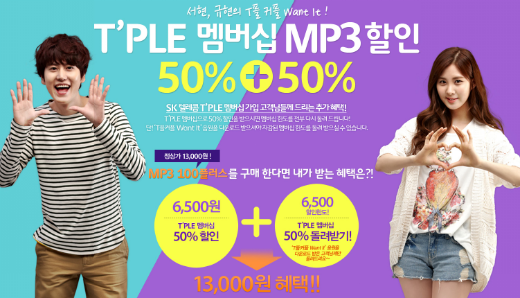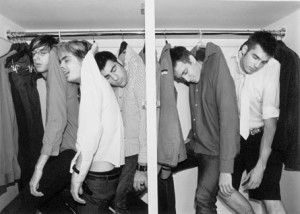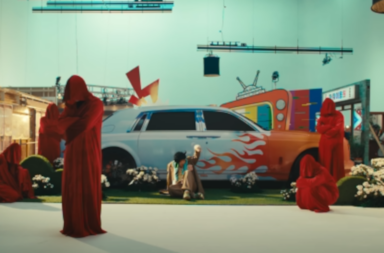Jumping from Western music to Korean music can be jarring. The numerous music shows, more EPs than LPs, and use of the word ‘comeback’ even though it’s only been six months will take some getting used to. It’s not a lie to say that Korean music promotions are pretty different from American promotions, but are they better?
 The wonderful thing about Korean promotions is that artists come back quickly. Someone is always coming back. K-pop fans get to see new releases after several months, with bigger acts gone for at most 13-14 months, and even then some are fortunate to have other releases like Japanese singles and OSTs. Meanwhile, fans of many American artists have to wait years for new material, especially with UK artists who decide to re-release their album in the States, the wait is even longer. Though this absence of new material gives way to multiple concerts and concert tours, there is a lack of televised performances since those in the West are limited to talk shows and end of the year award shows.
The wonderful thing about Korean promotions is that artists come back quickly. Someone is always coming back. K-pop fans get to see new releases after several months, with bigger acts gone for at most 13-14 months, and even then some are fortunate to have other releases like Japanese singles and OSTs. Meanwhile, fans of many American artists have to wait years for new material, especially with UK artists who decide to re-release their album in the States, the wait is even longer. Though this absence of new material gives way to multiple concerts and concert tours, there is a lack of televised performances since those in the West are limited to talk shows and end of the year award shows.
 American promotions can be great though since music videos accompany every single. A third to half of an album is normally promoted equaling multiple music videos and different performances. With K-pop, whether it be an EP or LP, only one song for the most part will be promoted. The closest thing K-pop gets are repackages and a short form of a B-side promoted before the title track for a week on music shows. Since K-pop depends highly on music videos, multiple music videos would be great.
American promotions can be great though since music videos accompany every single. A third to half of an album is normally promoted equaling multiple music videos and different performances. With K-pop, whether it be an EP or LP, only one song for the most part will be promoted. The closest thing K-pop gets are repackages and a short form of a B-side promoted before the title track for a week on music shows. Since K-pop depends highly on music videos, multiple music videos would be great.
With the promotion of multiple singles, there tends to be more cohesiveness in American albums and a higher chance at quality material due to radio play and digital buying. Since Korean promotions consist of only one title track, there tends to be a higher chance of filler material or practically no material at all. Though in Korean artists’ favor, if an artist or group releases a flop or poorly received title track/release then they can quickly come back with a better or more likable release. The speed of Korean music allows better fallback.
 K-pop overall doesn’t take making albums very seriously. There’s less focus on selling the actual album. The albums themselves are barely promoted. The fact that no other songs are promoted makes it seem like the album isn’t worth buying. Artists could do with promoting more tracks to show that it’s worth buying. The albums I personally buy are only because I take the time beforehand to check out if it’s worth it, and I don’t feel bothered to check out an artist’s b-sides who I don’t know well. For some people it’s just about collecting them rather than listening to them. How to make a proper full length album seems to be lost in the Korean music industry. There are too many K-pop albums that lack cohesiveness.
K-pop overall doesn’t take making albums very seriously. There’s less focus on selling the actual album. The albums themselves are barely promoted. The fact that no other songs are promoted makes it seem like the album isn’t worth buying. Artists could do with promoting more tracks to show that it’s worth buying. The albums I personally buy are only because I take the time beforehand to check out if it’s worth it, and I don’t feel bothered to check out an artist’s b-sides who I don’t know well. For some people it’s just about collecting them rather than listening to them. How to make a proper full length album seems to be lost in the Korean music industry. There are too many K-pop albums that lack cohesiveness.
So why doesn’t Korea promote like America? It all comes down to the factor that Korea is too small. Its market doesn’t have the numbers to be able to make a profit from these types of promotions. But, what hurts the chance of American-style promotions even more is digital buying in Korea.

South Koreans, for less than $10 USD per month, are able to have unlimited music streaming. The cost of downloading 50 to 150 songs per month only rates a few dollars higher. With a Melon music download package, a user only has to pay about six cents per song, a steep difference between the iTunes average of $1.29. Korea’s second popular music player Mnet charges 6,000 won for unlimited online streaming or to download 30 songs (18¢ a song). The profit for promoting so many songs is practically nothing. Lee Soo Man has stated that 1 million downloads can’t cover the cost of a music video, and Psy only made around $61,000 from “Gangnam Style” from downloading and streaming in Korea. When releasing singles, American artists rely on digital sales. It’s hard to make multiple music videos in Korea when the revenue from digital sales for the labels and artists can be as little as 30 won.
Despite the want for American style promotions, such a promotion strategy wouldn’t work in Korea. People aren’t willing to wait for artists to come back. People complain having to wait six months for new music. Though American promotions wouldn’t necessarily work in Korea, a few pointers could be taken. Promotions shouldn’t be rushed. The lightening fast pace takes away enjoyment. Take a breath and allow music to be enjoyed. It should be noted that there needs to be less music. Over-saturation has already shown itself to be killing the Korean music market. The constant releases don’t always help and it makes the product too throw away.
 Not to say that American promotions couldn’t learn something either. The wait between each release is too long a lot of the time. The long wait also doesn’t guarantee a good album. No one wants to wait two to even five years for a bad album. Artists also need to hype their music more. Hype can lead to letdowns, but hyping a release well will make people more excited and, with that, spread music farther. It’s always a surprise when an artist comes back. It’s not a good thing that I sometimes notice a new track weeks after it’s been released. American artists could also do with more public appearances. It widens the audience and gives something else for fans to digest.
Not to say that American promotions couldn’t learn something either. The wait between each release is too long a lot of the time. The long wait also doesn’t guarantee a good album. No one wants to wait two to even five years for a bad album. Artists also need to hype their music more. Hype can lead to letdowns, but hyping a release well will make people more excited and, with that, spread music farther. It’s always a surprise when an artist comes back. It’s not a good thing that I sometimes notice a new track weeks after it’s been released. American artists could also do with more public appearances. It widens the audience and gives something else for fans to digest.
It’s hard to say which one’s better. Some people prefer K-pop’s fast pace. Others prefer the reward of multiple singles and music videos after a long wait. They both have their strong and weak aspects. Either way, both could take some pointers from the other. It’s all about making money, so why not try something new?
(Korea JoongAng Daily, The Economist, Associated Press, Images via Nicole Cheng, MelOn, S.M. Entertainment, Phantom Planet, The Graham Norton Show)


